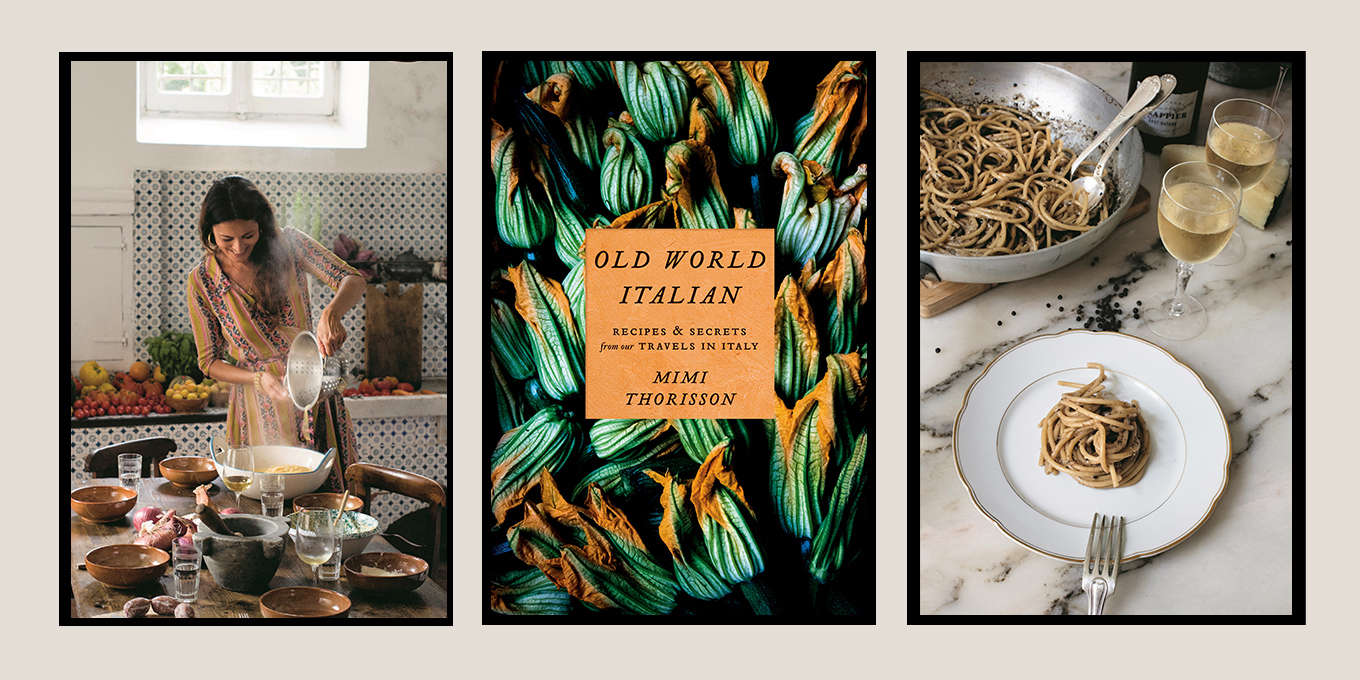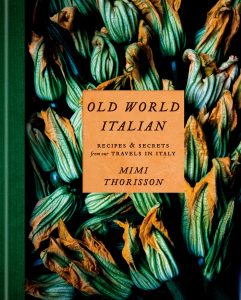Food & Drink
Mimi Thorisson's Cacio e Pepe Recipe
10/10 nonnas approve this recipe.
by : Victoria DiPlacido- Sep 24th, 2020

French cook and impossibly put-together human Mimi Thorisson offers her take on Italian cuisine in her new cookbook, Old World Italian: Recipes and Secrets from our Travels in Italy, out now. “It’s classic Italian recipes, but also my personal favourites,” says Thorisson of the book when we reach her at home in Turin, where she has lived with her husband and children for the past two years. Take, for example, her dessert recipe for madeleines with chestnut cream: “Madeleines are very French but chestnuts are very Italian; especially here in northern Italy, there are often chestnuts in desserts,” she says. Thorisson is the first to admit she is not a native Italian chef and shares several recipes from her favourite bars and restaurants around Italy. Old World Italian doubles as a guidebook in that way, she says, for when people are able to safely travel again.
In the meantime, Thorisson’s cacio e pepe recipe is a good substitute for actually being in Rome. It’s an easy one to recreate, but Thorisson notes people tend to make the mistake of cooking too much pasta for the sauce. “Your pasta really has to be coated with it,” she explains. Always start less pasta then slowly add more, if needed. “I encourage people to pair it with wine from the region,” adds Thorisson. “Who doesn’t love a good Barolo?” Indeed.
Mimi Thorisson’s Cacio e Pepe Recipe

Serves 4 to 6
2 tablespoons black peppercorns
1 pound / 500 g dried tonnarelli or spaghettoni (thick spaghetti)
3 cups / 270 g finely grated pecorino romano cheese
Note: To make this dish slightly easier to pull off (maybe more delicious, and greasier as well) but less authentic, heat 2 tablespoons / 30 g butter with the roasted peppercorns before adding the pasta water. This will emulsify the mixture better and create a richer (but oilier) sauce.
When I was picking the recipes for this cookbook, the Roman pastas proved one of the biggest challenges. I was sure that I wanted to include at least one or two, but which? There are four pasta dishes found on the menus of many, if not most, restaurants in Rome. They are pretty much all the same recipe with one or two ingredients removed or added – a step-by-step thing: Cacio e Pepe, like the name suggests, has only cheese and pepper. Gricia adds guanciale. Carbonara goes a step further and famously includes eggs. Instead of eggs, Amatriciana has tomatoes. Cacio e Pepe would have been hard to leave out. The dish is simplicity itself, which can sometimes be the hardest thing to achieve – ingredients are key but the magic lies in the execution.
1. In a large, heavy skillet, roast the peppercorns over high heat until you hear a popping sound, 4 to 5 minutes. Remove from the pan and grind them with a mortar and pestle or spice grinder. Return the ground pepper to the skillet.
2. Meanwhile, bring a large pot of salted water to a boil over medium- high heat. Add the pasta to the boiling water and undercook by 5 minutes.
3. Reserving 1½ cups / 370 ml pasta water, drain the pasta. Add 1 cup / 250 ml of the reserved water to the pan with the pepper. Bring to a simmer over medium heat. Add the pasta to the skillet to finish cooking.
4. When the pasta is al dente, remove the pan from the heat and stir in the pecorino and remaining ½ cup / 120 ml pasta water. Quickly and vigorously toss the pasta with the sauce to make sure each strand of pasta is coated and the sauce is evenly emulsified. Serve immediately.

Old World Italian: Recipes and Secrets from our Travels in Italy by Mimi Thorisson ($45), at chapters.indigo.ca.
Excerpted from Old World Italian: Recipes and Secrets from our Travels in Italy by Mimi Thorisson. Copyright © 2020 Marie-France Thorisson. Photography Copyright © 2020 Oddur Thorisson. Published by Appetite by Random House ®, a division of Penguin Random House Canada Limited. Reproduced by arrangement with the Publisher. All rights reserved.
Newsletter
Join our mailing list for the latest and biggest in fashion trends, beauty, culture and celebrity.
Read Next

Fashion
Are Fashion Brands Getting Greener?
While the fashion industry is making a lot of noise about being more sustainable, a closer look shows that its earth-friendly commitments are often more illusion than reality.
by : Marouchka Franjulien- Apr 19th, 2024

Beauty
What Beauty Packaging Is Actually Sustainable?
We sought out leaders in the field to help us get to the bottom of the blue bin once and for all.
by : Victoria Christie- Apr 19th, 2024

Culture
Discover Club Med’s Stunning Exclusive Collection
Vacation destinations that bring pure luxury and comfort.
by : ELLE Canada- Apr 8th, 2024




